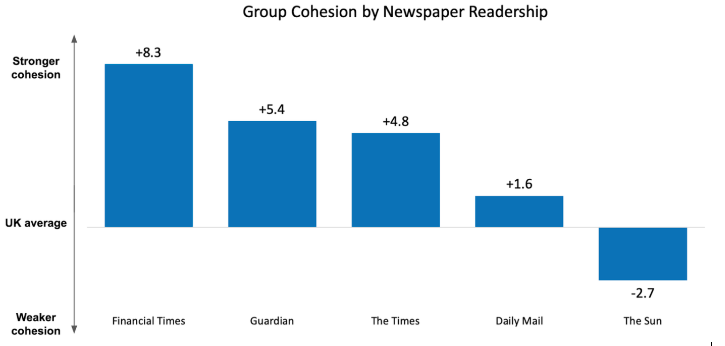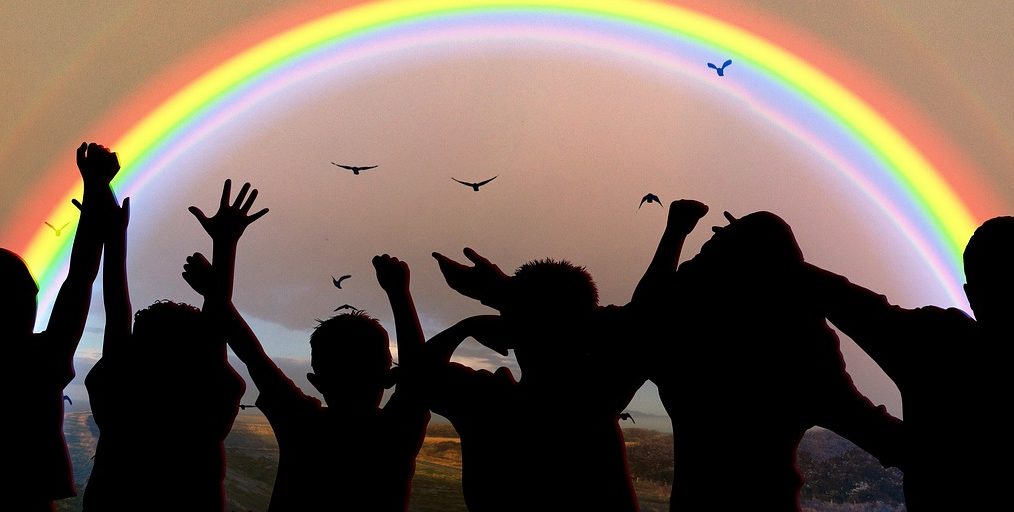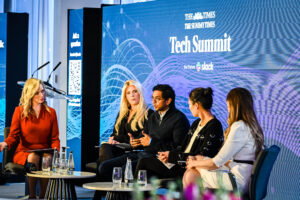Many of us in media and marketing are increasingly coming to understand the importance of the audience's shared experience, of community.
Empirical research shows that community is an increasingly important construct in people’s lives generally.
During the first lockdowns, we saw how "public spirit" became of paramount importance. Indeed, many recognise that community is not necessarily bounded by local geography but is about connection and identification in a broader societal sense.
So, can media create a sense of community that benefits not only its members but brands as well?
Reflecting the community
To understand more about this, News UK’s commercial team commissioned D.fferentology, a research agency, to conduct a survey of 400 The Sun readers.
The findings show their experience and expression of community had changed significantly since the pandemic began:
- Six out of 10 said societal issues read about in The Sun applied to their own community.
- 51% said our platforms made them more aware of these issues since coronavirus.
- Our audiences feel connected to national interests and issues through reading The Sun.
- They said its content and platforms are a reflection of, and influence, the community of which it is part.
In the last 50 years, @TheSun's readers have raised up to £100m for charities. To celebrate its big birthday, and thank its generous readers, it has launched a special £1 million Sun Readers Fund, so readers can nominate their favourite causes: https://t.co/nvjFuG26MK pic.twitter.com/AKYPDP9bVL
— News UK (@NewsUK) November 18, 2019
The Sun, therefore, can be described as follows:
- a cultural reference point.
- synonymous with irreverent storytelling.
- reflective of UK culture.
- accessible to all, with consistent quality across any platform or device.
- the number one news brand in the country.
Light in the dark
The Sun celebrates and champions the causes of the everyday man and women, and has done so for more than 50 years.
This approach resonates with audiences who care about energy tariffs, food bills, mortgages, job security and children’s education and who don’t necessarily have the means to buy themselves out of trouble.
They buy The Sun for a reason - life is frustrating and tough for some of our readers; they look to the publication for a lift. It is incumbent on our editorial teams to make our content entertaining, to make people smile because it's amusing, it's clever or it's saving them money.
Latest update on £650 cost of living payment - are you eligible where you live? https://t.co/Ur5McnRTM7
— The Sun (@TheSun) June 24, 2022
Advertisers can leverage this “inclusive” relationship. The relationship is a dynamic one, active rather than passive, and is consistent irrespective of the platform in which The Sun's content is consumed.
The evolution of the brand, into a multi-channel offering with varied demographic profiling, means the customer relationship has changed over time.
Spread positivity
Rather than media's traditional top-down, broadcast approach, this remains a relationship built on reciprocity.
In social psychology, reciprocity is a social norm of responding to a positive action with another positive action.
As a social construct, reciprocity means that, in response to friendly actions, people are frequently much nicer and much more cooperative than predicted by the self-interest model.
Numerous research studies have emphasised the impact of reciprocity on influencing decisions - if I give you something, you feel compelled to give something back.
#IMMSLions girls athletics and girls PE read this book on Friday and discussed ways to spread kindness through our words and actions this week! How have you filled a bucket this week? #CastleberryISD pic.twitter.com/kheh1nrV5d
— Lael Warden (@Warden_CE) April 6, 2020
In The Sun’s value exchange, audiences believe in what we say and how we say it, and they feel a part of something, a community of people who have shared interests and passions and who are driven to interact with the brand.
This reciprocal relationship influences the behaviour of our audience. For example, in the "Jabs Army" campaign, The Sun’s call-to-arms for volunteer recruits, 50,000 people signed up to be part of the UK’s vaccination effort.
Get boosted and protect your loved ones for Christmas, says vaccines chief - as she hails The Sun's 'amazing' Jabs Army https://t.co/z4JWmZV4G6
— SunHealth (@TheSunHealth) December 23, 2021
Numerous other examples range from fundraising for our health heroes (£1m raised for the NHS since the crisis began) to the recent passing of legislation securing additional rights for victims of domestic abuse (in no small part, resulting from our six-year campaign for such rights) illustrate this force for good.
Nominate now for @TheSun Who Cares Wins awards - honouring the extraordinary people that keep our #NHS running, from cleaners to porters, nurses to doctors and paramedics. https://t.co/QH1mqcyisj.#StayWellEssex @EssexPH @SNEE_ICS @yourcolchester @Tendring_DC @Community360org pic.twitter.com/wS0peZFEhq
— NHS SNEE ICB - north east Essex (@SNEEICB_NEE) June 14, 2022
Whilst shining a light on the dark and sometimes challenging aspects of society can be a necessary component of journalism, The Sun also aims to mobilise its audience positively, to be the vanguard for the betterment of society.
Diversity in community
Our survey discovered that over 56% of The Sun’s readers view the title as a friend - the brand acts as a social catalyst.
This is heartening, since marketers how all too well how impactful one’s social peer group is on the decision-making process.
Of course, all peer groups differ in their dynamic and context. Our experience of community is influenced by our own "lived" experiences. Even if a community is experienced collectively, we all subjectively interpret experiences and information from that community through our own lens - be it cultural, ethnic or gender-based.
The Sun empowers our audiences with information that actively promotes a diverse set of opinions necessary for healthy debate and progress in the modern UK.
Breadth in the bond
Research supports this theory. When BBH Labs analysed 419 TGI lifestyle statements to determine the level of group cohesion - that is, commonality - within readerships of UK news brands, the results caused some raised eyebrows, as The Sun scored the lowest, with significantly less cohesion than amongst readers of other news brand.
But that was actually a wonderful discovery for us. Because weak commonality actually equals strong diversity.
In other words, if you locked 100 Sun readers in a room together, there would be significantly more diverse views than if you repeated the experiment with 100 randomly selected citizens.

Whilst cohesion is, in many senses, a must-have in society, divergent views, even within a distinct community, suggest broad tolerance for different opinions and an underlying diversity among those who otherwise have a common bond.
This diverse depiction of The Sun’s audience is a world away from assumptions derived from the classical "white van man" trope.



 News UK
News UK 






